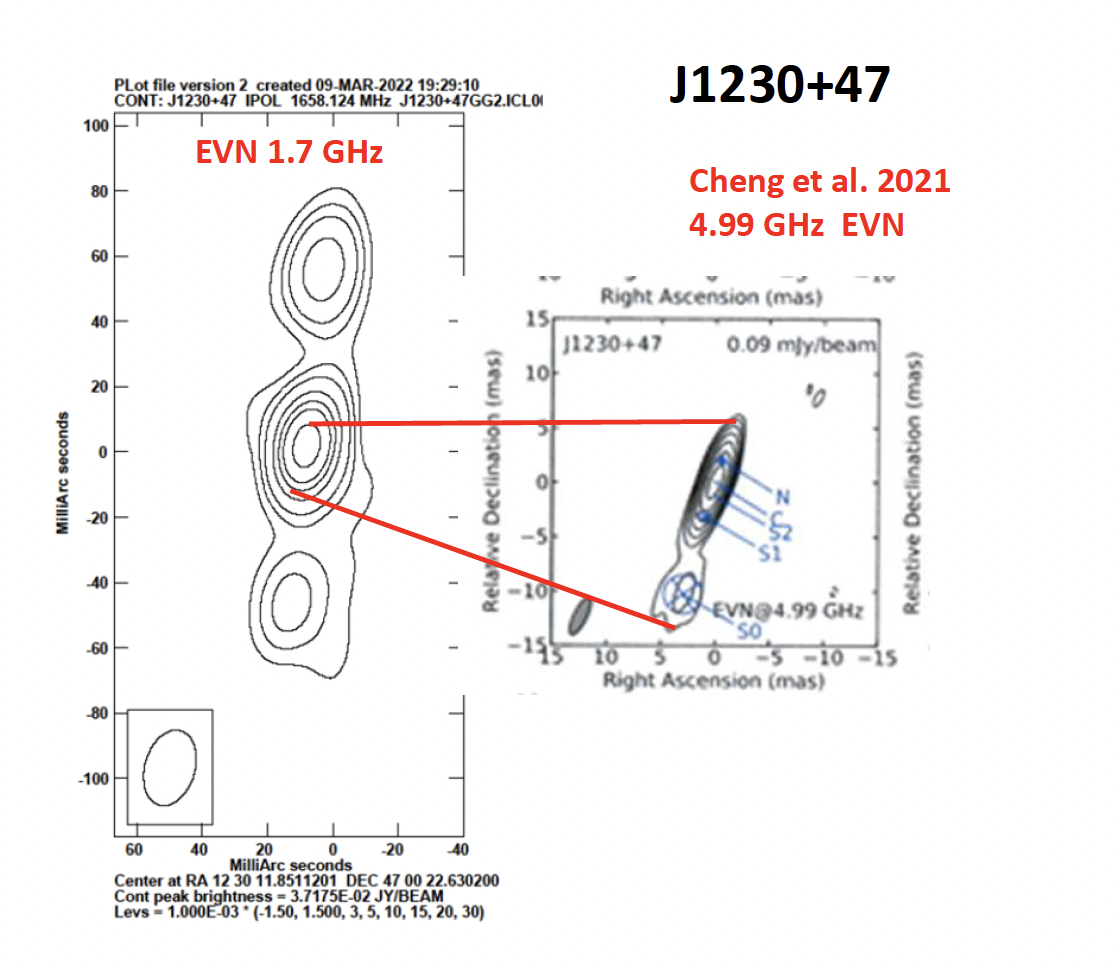
Jets in FR0 radio galaxies
by Gabriele Giovannini

The local radio-loud Active Galaxy Nuclei (AGN) population is dominated by compact sources named FR0. These sources show features, such as the host galaxy type, the mass of the central supermassive black hole (SMBH), and the multi-band nuclear characteristics, that are similar to those of FRI radio galaxies. However, in the radio band, while FR0 and FRI share the same nuclear properties, the kiloparsec-scale diffuse component dominant in FRI is missing in FR0s. Therefore, to understand the nature of FR0 is important to study their parsec-scale structure in comparison with nuclear properties of FRI sources. We know that jets in FRI radio galaxies are relativistic on parsec scale and decrease their velocity becoming sub-relativistic on kiloparsec scale. Our aim is to test whether this result applies to jets in FR0 or, alternatively, whether they are sub-relativistic on the parsec scale. To this aim we observed 18 FR0 galaxies with the VLBA at 1.5 and 5 GHz and/or with the EVN at 1.7 GHz and produced detailed images at mas resolution of their nuclear emission to study the jet and core structure.
All sources have been detected but one. The widespread detection of compact parsec-scale jets in FR0s indicates that the origin of the radio emission is synchrotron emission from outflows produced by a SMBH at the center of the parent galaxy. The complex jet structures and the large number of sources with double-sided jets provide a strong evidence that the FR0 jets present in VLBI images are mildly relativistic, contrary to what is observed in FRI sources.
These results are in agreement with the suggestion that FR0 jets are associated with a low (and prograde) spin SMBH. In these sources theoretical models suggest that jets are structured; a relativistic faint inner spine launched by the black hole ergosphere ((Blandford-Znajek jet) is surrounded by a dominant nonrelativistic shear launched by the accretion disk (Blandford-Payne jet). Because of the strong interaction between the shear and the surrounding interstellar medium, the jet cannot survive to reach the kilo-parsec scale.
Despite the low power and small size of radio emission in FR0s, our results represent clear evidence for the presence of collimated jets. This implies that the AGN feedback mechanism plays an important role in these sources. Recent observations have shown that a low-power jet is able to remove cold gas from the center of a galaxy, and therefore to influence the accretion onto the SMBH. This is an important result since FR0 are the dominant population of local radio-loud active galaxies.
Published in Giovannini et al. 2023, Astron. Astrophys., 672, A104